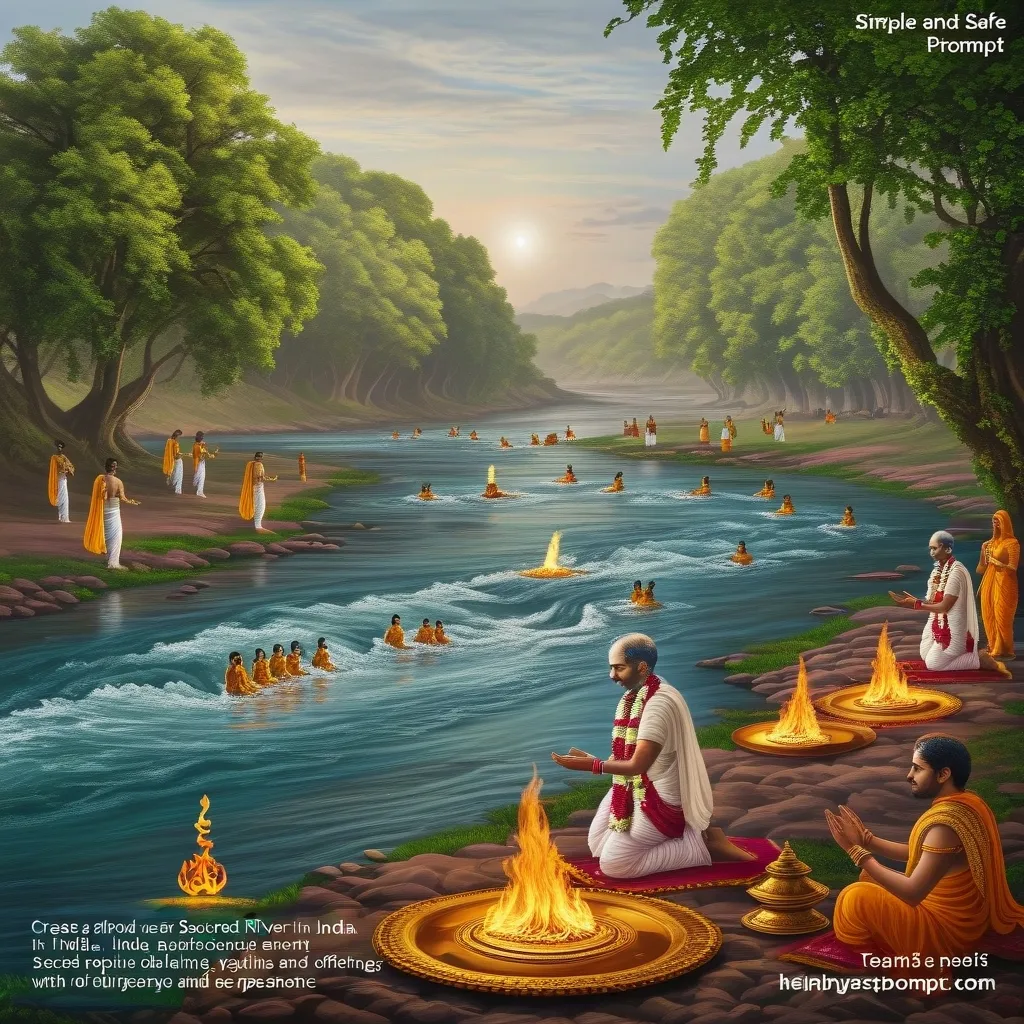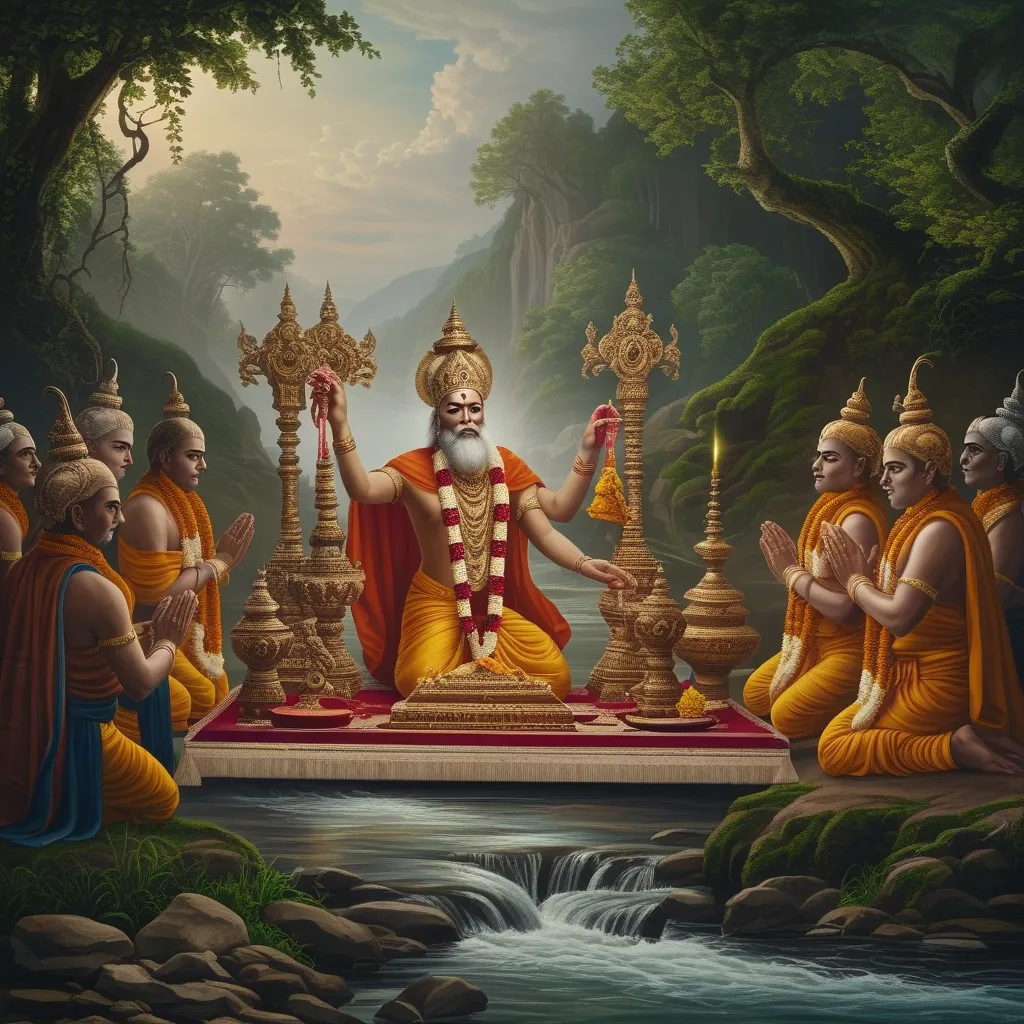In the expansive and intricate realm of Hinduism, the Yajur Veda stands tall, offering a crucial guide for rituals and ceremonies that connect us to the divine. An essential part of these rituals is the deep veneration of sacred rivers and the integral role water plays in Vedic ceremonies. Dive with us as we explore sacred rivers, the paramount importance of water, and how these elements are tightly woven into the fabric of Vedic rituals.
Sacred Rivers
Don’t think of sacred rivers in Hinduism as just flowing water; they’re divine entities, brimming with life and spiritual purity. They’re called “tīrthas,” or crossings, places where you can transition from the everyday world to the spiritual domain. The seven sacred rivers of India—Sindhu, Sarasvati, Ganga, Yamuna, Narmada, Godavari, and Kaveri—hold a special place in devotees’ hearts. The Ganga, in particular, takes the crown, often seen as a portal to heaven.
Originating from creation myths, these rivers symbolize redemption and are akin to the nectar of gods. Devotees view them as living goddesses, channels of life, fertility, and sustenance. The Nadi Stuti Sukta, a hymn from the Rigveda, sings praises of these rivers, shedding light on their divine essence.
Water in Vedic Ceremonies
In Vedic rituals, water isn’t just a necessity; it symbolizes purification, life, and spiritual upliftment. The Vedas regard water as divine, promising peace, happiness, wealth, longevity, and robust health. Water’s role as a purifier is embedded in Vedic philosophy, highlighting its formless potential before things evolve into existence.
Water shows up in various forms during Vedic ceremonies. For example, morning and evening adorations, known as “sandhya,” involve mantra recitations and offerings to the Sun, frequently including water. These rituals are purposed to cleanse individuals and prep them for spiritual practices.
Yajur Veda and Rituals
The Yajur Veda, one of Hinduism’s four supreme scriptures, acts like a priest’s manual guiding diverse rituals. The term “yajna” implies worship or sacrifice, central to understanding the Yajur Veda. These rituals involve offering items like ghee, grains, spices, and woods into a sanctified fire while chanting mantras. Fire, or Agni, serves as the divine messenger, carrying our offerings and prayers to the gods.
Water is pretty essential in these rituals too. Take the agnihotra, a morning and evening oblation where milk is offered into the home fire altar. This act maintains sacred fires and ensures household well-being. Seasonal agricultural offerings use water too, mirroring the life cycle and our reliance on nature for sustenance.
The Five Obligatory Offerings
Vedic tradition mandates five key offerings to fulfill religious duties. These include offerings to gods, cursory offerings to all beings, a water libation mixed with sesame for deceased spirits, hospitality, and Veda recitations. While idealized, these offerings highlight the all-encompassing nature of Vedic rituals, touching on various life aspects and the natural world.
Rituals and Sacred Geography
India’s geography and its spiritual narrative are deeply intertwined. Rivers and other natural elements are more than mere landscapes—they are spiritual realms. Temple sites, for example, are chosen based on astrology and divination, ensuring a peaceful ambiance for spiritual practices. Temples become worship centers, where rituals forge a connection to the divine, fostering community and spiritual growth.
Contemporary Significance
Despite the march of time, Vedic rituals retain their power, providing worshipers with a direct link to the spiritual worlds of ancestors, devas, and gods. Organizations like the Gayatri Pariwar breathe fresh life into these rituals, drawing thousands to participate. Modern yajnas, with their numerous fire altars and worshiping groups, prove the enduring relevance of Vedic ceremonies today.
Conclusion
The Yajur Veda, sacred rivers, and water offerings in Vedic ceremonies weave a cohesive narrative showcasing the inextricable bond of nature and spirituality in Hinduism. These practices go beyond mere rituals; they form a way of life, reflecting profound reverence for the natural world and its integral role in our existence. As we navigate the complexities of modern living, these ancient rituals remind us of the necessity of harmonizing with nature and pursuing spiritual growth.
To echo the Yajur Veda, “The one who understands this universe as the product of Supreme Energy becomes energetic, has worthy progeny, and many cattle. Even the moon is the creation of that Supreme Energy.” This profound realization underscores the essence of Vedic rituals and the sacred elements surrounding them, leading us toward spiritual enlightenment and harmony with the natural world.






